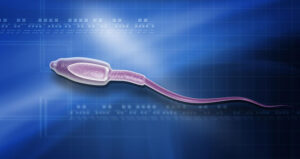Azoospermia Success Stories | From 0 to Millions of Sperms – Miracles!
We have seen a lot of patients who have Azoospermia, but sometimes they get demotivated, and that’s why we have decided to share azoospermia success stories.
Table of Contents
Azoospermia Success Stories | From 0 to Millions of Sperms – Miracles!
Understanding Azoospermia and Severe Oligoasthenoteratozoospermia (OAT)
Azoospermia is a disorder in which males do not have any sperm in their sperm, resulting in infertility. It affects around one percent of males and is thought to cause infertility in approximately 15 percent of infertile men.
Men who fall into this category will not utilize their semen to get their spouse pregnant unless they are treated for the underlying condition and have it resolved. If nothing else works out, another option is to employ a sperm donor as a last resort.
Having Azoospermia may be caused by the testicles not producing sperm, or it can also be caused by a disease that stops the sperm from being released from the body.
There are three main types of Azoospermia:
Pretesticular Azoospermia:
The testicles seem normal, yet they are not generating any sperm. It is a highly unusual disorder that may occur due to low hormone levels or as a side effect of chemotherapy.
Testicular Azoospermia:
Damage to the testicles prevents them from producing sperm in a typical manner. It may occur due to an infection in the reproductive system, such as epididymitis and urethritis, or as a result of a childhood sickness, such as viral orchitis, which results in enlargement of one or both testicles.
An additional reason might be an injury to the groin area, cancer or cancer therapies such as radiation, or a hereditary disorder like Klinefelter’s syndrome.
Post-testicular Azoospermia:
When the testicles produce normal sperm, but something prevents it from exiting the body, such as a vasectomy, a blockage (known as obstructive Azoospermia) in the tubes that transport sperm from the testicles to the penis, or retrograde ejaculation, in which the semen exits the body through the bladder rather than the penis, the condition is known as anovulatory insufficiency. The post-testicular variant of Azoospermia affects around 40% of males with the condition.
Diagnosis includes sperm testing, and if there are no sperms, the medical history is reviewed and physical and blood tests to determine hormone levels. If hormone levels are routine, scrotal or, transrectal ultrasonography is conducted to search for vas deference obstruction(s).
An MRI may be used to confirm the diagnosis. Surgery is sometimes the only option to find an impediment. Genetic testing is necessary to discover hereditary problems if no block is found.
Azoospermia treatment options include hormone therapy, coaxing sperm back to sperm, and boosting the probability of finding sperm after extraction. Follicle-stimulating hormone (FSH) and human chorionic gonadotropin (HCG) are two of these hormones (HCG).
Sperm retrieval is done on men with non-obstructive Azoospermia or a blockage but who do not want surgery. A small needle is used to extract sperm straight from the testicle, and the sample is then saved for future therapy.
Oligoasthenoteratozoospermia (OAT) is a disorder that involves oligozoospermia (low sperm count), asthenozoospermia (poor sperm motility), and teratozoospermia (poor sperm mobility) (abnormal sperm shape). The most prevalent cause of male infertility is OAT.
Treatment Suggested by Doctor Omar Chughtai, Fertility Specialist
If necessary, the patient was recommended to extract motile sperm from his ejaculate or undergo a testicular aspiration. After exposing the sperm to HOS and choosing the motile sperm, they were advised to proceed with ICSI.

Hypo Osmotic Swelling (HOS) Test
The hypo-osmotic swelling (HOS) test is a relatively recent essay that assesses the functional integrity of the sperm’s plasma membrane and is a valuable complement to standard sperm analysis. This is an excellent sperm indicator that may help you better manage your reproductive results.
Progressive motility, morphologically normal spermatozoa, and percentage of swelling with the hypoosmotic test are the factors examined in the HOS test. The hypoosmotic test is a straightforward way to evaluate membrane function, and the findings suggest that individuals with low swelling scores (40 percent) are of questionable fertility.
Intracytoplasmic Sperm Injection (ICSI)
Intracytoplasmic sperm injection is a treatment that involves injecting a single sperm cell directly into the cytoplasm of an egg. This method is used to prepare gametes to create embryos that can be implanted into the maternal uterus.
The rate of fertilization obtained is the most critical measure of ICSI success. Fertilization rates are often outstanding, ranging from 80 to 85 percent. In this procedure, a single sperm is injected into the cytoplasm of a single oocyte (egg).
Aside from the unusually high fertilization rate, another benefit of this approach is that a clean and cleansed sperm sample may be produced utilizing several procedures to exclude low-quality sperm, resulting in the use of exceptionally high-quality sperm.
Successful Treatment Outcome
The aspiration method was used to collect the sperm sample, then washed. The HOS positive sperms were utilized in the ICSI method and injected into the cytoplasm of the twenty eggs extracted from the female partner.

Nine of these eggs were fertilized, resulting in two blastocysts. Both blastocysts were implanted into the lady’s uterus. The couple had twins in a subsequent pregnancy. During the pregnancy, everything went as planned, and the couple was gifted with their biological twins.
